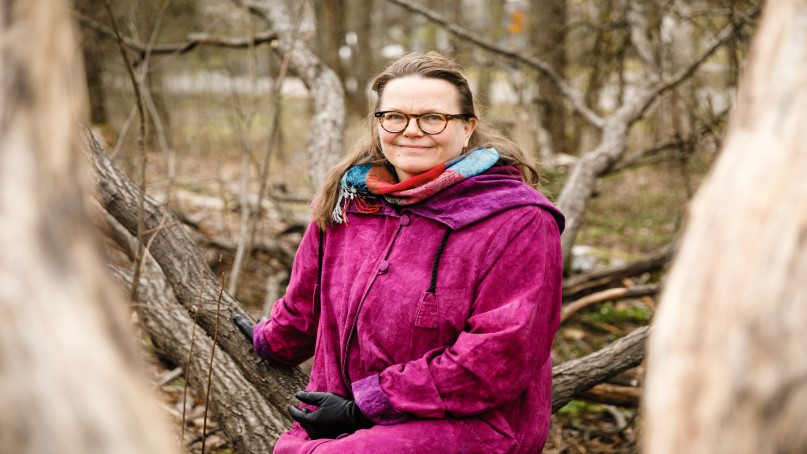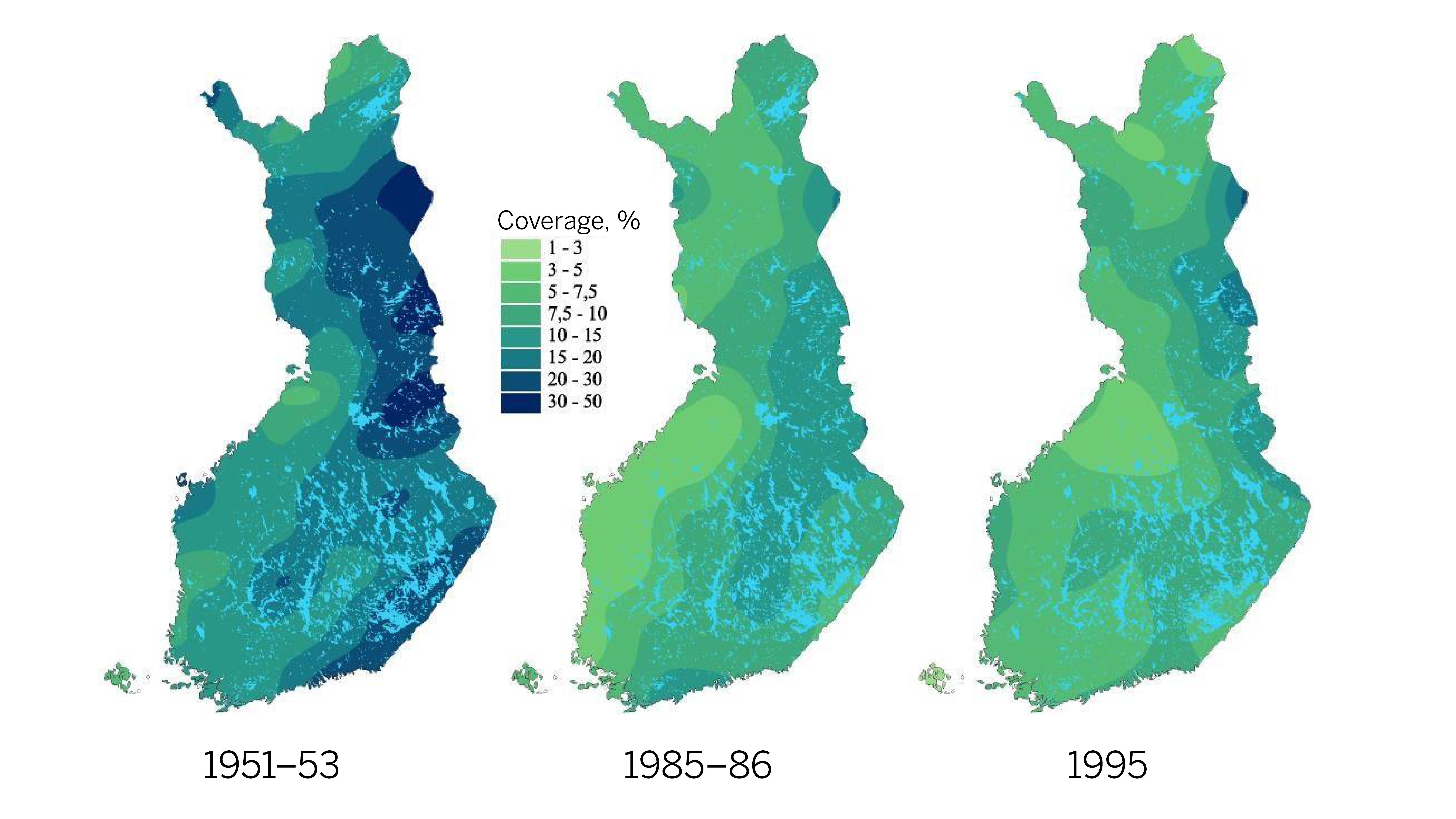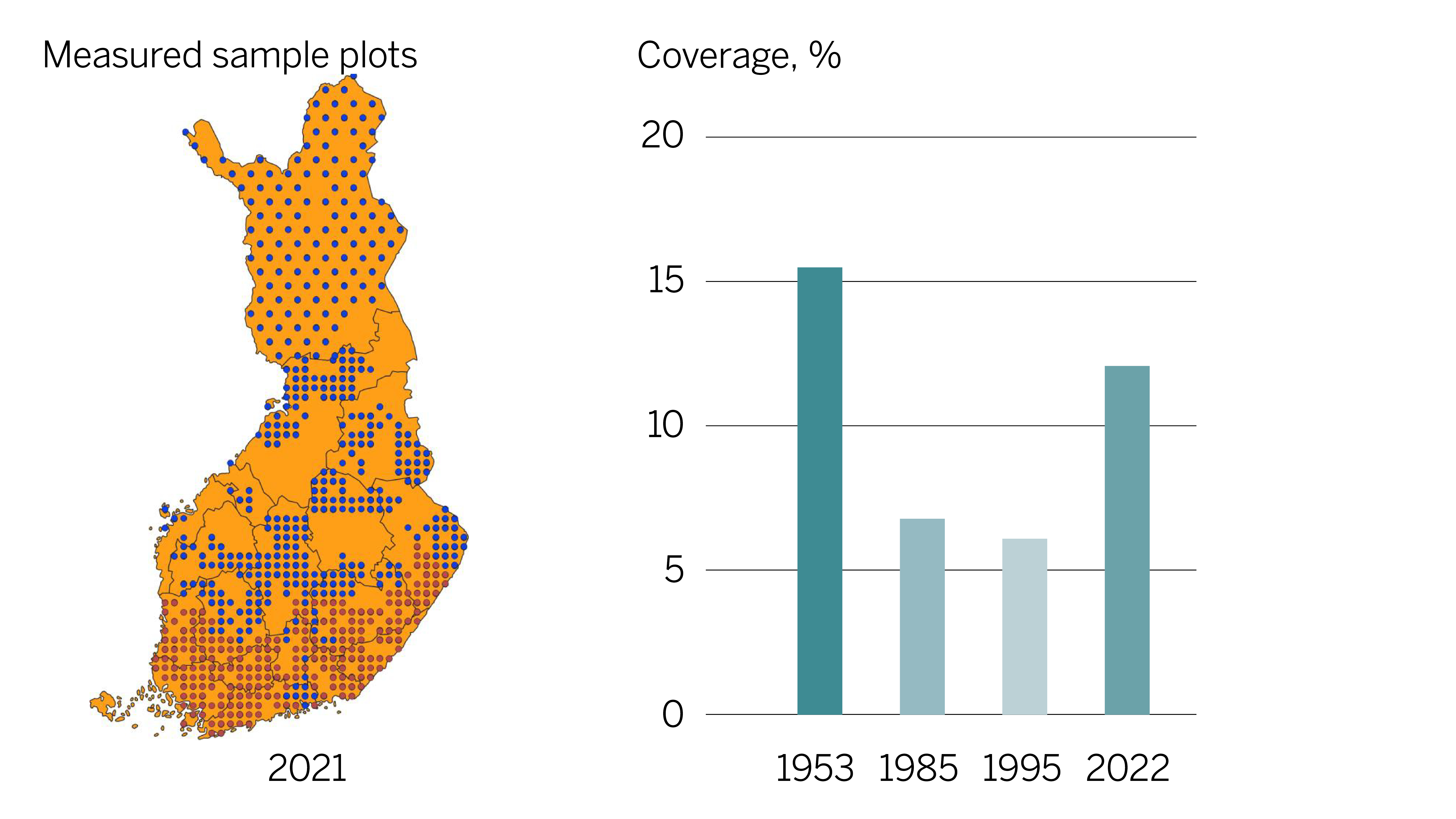One of the reasons why European blueberries have become more abundant is that the harrowing and scalping methods of soil preparation have been replaced by mounding and inverting, says research professor Raisa Mäkipää with Natural Resources Institute Finland.
The fact that blueberries have been increasingly flourishing in the forests of Southern Finland made headlines when Natural Resources Institute Finland published its first preliminary results on their inventory of forest and bog plants conducted in the summers of 2021–2022.
The study compared its data with the vegetation inventories conducted in the same sample plots in 1985–1986 and 1995. Measurements of the nationwide sample plot network will continue in the summer of 2023, but based on the sample plots measured so far, it seems that the cover of blueberries has clearly increased.
“The positive development of blueberries is surprisingly clear. This result is a joy and a relief to see,” says Mäkipää.
The importance of rhizomes
Blueberries are plants that spread almost entirely through growth, thanks to their system of rhizomes, also called rootstalks. The rhizome of an individual plant can span an area of several metres.
Soil preparation methods that break large areas of the ground’s surface also break the rhizomes of blueberries. Such methods include scalping and harrowing. Blueberries recover slowly if the rhizomes are broken.
“You can think of the rhizome of a blueberry plant like the trunk of a tree. If it’s broken, the blueberry bushes lose their connection with most of their resources, which makes recovery more difficult.”
Until the 1990s, scalping and harrowing were the most common soil preparation methods. Mounding methods, which are lighter and break less of the ground’s surface, became more common in the 2000s. In 1996, the total area used in soil preparation operations was 128,000 hectares, of which 20,000 hectares were prepared using mounding, and 108,000 hectares using other soil preparation methods. In 2020, the total area used in soil preparation operations was 90,000 hectares, of which 65,000 hectares were prepared using mounding, and 25,000 hectares using other soil preparation methods.
According to Mäkipää, blueberries growing from seeds is extremely rare. There are few blueberry seedlings in nature, and seeding them in greenhouse conditions is also difficult.

Operaatio Mustikka
Natural Resources Institute Finland monitors the prevalence of blueberries through a project called Operaatio Mustikka (“Operation Blueberry”). In addition to blueberries, researchers are charting the development of other forest and bog plants’ prevalence over three growth periods. The last sample plots will be inventoried in the summer of 2023, and the final results will be available in 2023. A total of 3,000 sample plots will be inventoried across the country during the project.
The vegetation data gathered in the inventory is also used to create models to show how various environmental factors affect the prevalence of species.
“For example, our understanding that blueberries recover slowly after rhizomes are broken is based on data gathered in vegetation inventories, which includes data about the trees in the sample plots and any preceding forest management operations, as well as experimental studies,” says Mäkipää.
In Finland, the vegetation of forests and bogs has been inventoried during national forest inventory studies. Long-term monitoring data is highly valuable to researchers studying causal links. Updated information is needed for purposes such as developing forest management measures to better safeguard the biodiversity of forest nature.
Blueberries flourish most in mature old-growth forests with plenty of light. For optimal blueberry conditions, the forest’s trees should have a basal area of 24–30 square metres per hectare.
“A completely open area has too much direct sunshine for blueberries, and a very thick old-growth forest is too dark. Forest owners through the ages have known that blueberries flourish when thinning is used in moderation, but you should also be careful of gaps if you want to protect your blueberry harvest,” says Mäkipää.
Continuous cover forestry may be harmful
Continuous cover forestry may be a good forest management method for blueberries – or it might not. Regular thinning operations ensure that there is enough light in the forest, but there is a risk that the felling operations disturb the ground surface too much.
“Continuous cover forestry can be really intensive, so there might be machinery used in the forest every 15 years. In Finland, we don’t have experience about this kind of forest management yet, so we can’t predict how well it works.”
According to Mäkipää, continuous cover forestry is currently being studied regarding both peatlands and mineral soil. According to current information, a forest owner who wishes to protect their blueberries should use thinning in moderation and consider extending the rotation period.
Temperature does not matter for prevalence
Researchers also use the comprehensive data collected in the forest inventories to create models that predict the effects of forest development and climate change, or assess changes in the carbon storage of forests.
As the climate warms, the relative cover of forest plant species that react to the increasingly warm growth periods is expected to move approximately eight kilometres per year. However, it looks like blueberries are quite resilient in the face of changing climate conditions.
“We have modelled the effects of thermal sums on forest species, but it looks like thermal sums do not affect the prevalence of blueberries. The changes in the prevalence of blueberries is explained by other factors, such as forest management and the moisture and nutrient content of the growth site.
Operaatio Mustikka is part of the Catch the Carbon climate action package, which is funded by National Resources Institute Finland, the Ministry of Agriculture and Forestry, the Ministry of the Environment, the Finnish Innovation Fund Sitra and the Hako Ollikainen Foundation.
Changes in blueberry cover in 1951–1995

Source: Reinikainen et al. 2000. Kasvit muuttuvassa metsäluonnossa. Tammi.
Preliminary results for blueberry cover in 2021–2022 *

This article was originally published in issue 4/2022 of Metsä Group’s Viesti magazine.
Text Maria Latokartano
Photos Seppo Samuli and Metsä Group
